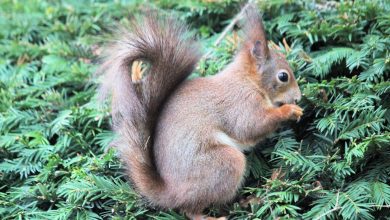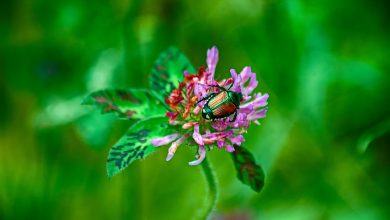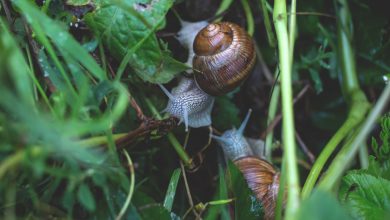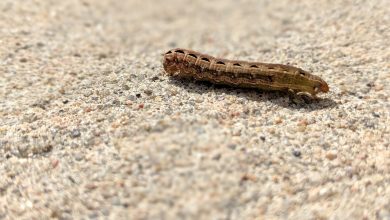How to Remove Common Garden Pests
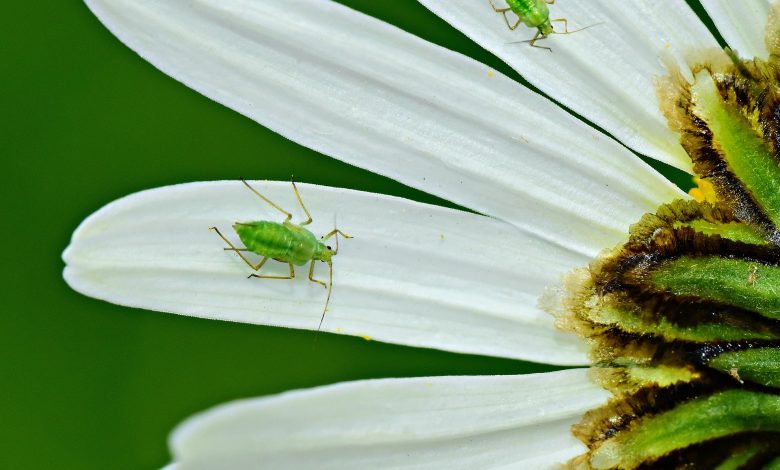
When it comes to your garden, chances are you’ve put a lot of work into its growth and maintenance. Every day, you tend to your plants and make sure they’re happy – but sometimes there are other visitors showing up in your garden as well.
Garden pests can be annoying, especially if they’re feeding off your plants and killing them in process. Not to mention, a lot of common garden pests pile up on your gorgeous plants or leave evidence of their presence behind.
Depending on your climate, location, and the types of things you’re planting, there are all kinds of pests that can show up in your garden. To ensure that your plants and flowers are safe all season long, consider these common garden pests and how to remove them naturally.
Ladybugs
Before we get into the pests that you don’t want in your garden, we must bring attention to an insect that you do want! Ladybugs are a welcome sight in people’s gardens, because they feed on aphids and other insects that can damage your plants and flowers.
While an adult ladybug is very easy to recognize with its red shell and black polka dots, the larvae version of this creature looks much different. The larvae have long bodies that are chubby and spotted, often seen with red, black, and white coloring.
If a gardener doesn’t know what this is, it often looks intimidating to their plants. However, this isn’t the case! These larvae can eat up to 400 aphids while they grow, and they’ll continue to swarm on your plant-eaters when they mature. Ladybugs are not a pest, and gardeners should keep an eye out for these larvae; they are a beneficial addition to any garden.

Aphids
Any gardener knows the struggle that comes with aphids. These tiny creatures are found worldwide, and they come in all sorts of shapes and colors. Their numbers are so strong based on the fact that they don’t actually have to mate in order for the female aphid to have young. It is estimated that there are about 5,000 species of aphid, all collected under the family name Aphididae.
When it comes to cultivated plants, aphids are one of the most destructive creatures. Approximately 400 different varieties prefer crops and food, while others wreak havoc on forests and agriculture.
Found in large groups, aphids essentially suck all of the sap out of a plant’s stems, leaves, and roots, drying them out. Additionally, they leave behind a honeydew, which is sticky and perfect for mold growth. Because of the way they eat, their viral diseases can also be deadly to your garden.
Removal
Oddly enough, many varieties of aphids do not respond to the use of pesticides. Additionally, aphids have evolved to practice a beneficial relationship with dairying ants, who eat the leftover honeydew and protect the bugs.
So what can you do about aphids in your garden? There are a few approaches you can use to get rid of aphids, all of which are natural options:
- Wash your plants with a strong spray of water. Aphids do not latch onto your plant, so they can be easy to remove with a strong enough spray.
- Apply a spray directly to the plant that includes either garlic or hot peppers. Aphids detest these smells and won’t stick around.
- Encourage visitors that munch on aphids, including ladybugs and lacewings. Ladybugs can be purchased and dispersed into your yard, but you’ll need to entice them to stick around. Do so by releasing them in the evening, when they won’t be as keen to fly away. Additionally, you can plant flowers they enjoy ahead of time and mist their leaves with water to convince them to keep returning.
- Try to avoid soap sprays since these can be damaging to your plants.
Prevention
To avoid these garden pests ever becoming a problem in your garden, introduce the aphid’s biggest predators to your garden: the ladybug. With ladybugs already establishing the area as their own, aphids may never even try to eat in your garden.
Additionally, avoid having too many lights in your garden area in the evening. Moths are attracted to lights and may be inclined to lay their eggs in the area.

Caterpillars
Caterpillars are fun to interact with, and their growth process is fascinating, but they can be a huge nuisance in your garden. Caterpillars are really just born to eat, and they’re very good at it – one caterpillar alone can eat up to 27,000 times its bodyweight in its lifetime!
Unfortunately, caterpillars aren’t very picky. They can be found munching on trees, fruits, vegetables, and flowers. Fortunately, they’re not hard to miss, and if you’ve got a few too many feasting in your garden, you may need to have them removed.
Removal
If you have caterpillars in your garden, consider these approaches to removing them:
- Encourage enemies of the caterpillar to visit your garden, including birds, ladybugs, and yellow jackets.
- Put cardboard around the base of your plants.
- Apply a naturally-occurring bacterium into your existing soil called Bacillus Thuringiensis. This is safe to humans and animals, but food should be washed well before consumption. When buying the bacteria, ensure the labelling has a OMRI stamp, which is from the Organic Materials Research Institute.
- Use a mixture of soap and water to make the surface of your pants slippery.
- A pepper and garlic mixture will kill caterpillars, and also works for aphids. The recipe is:
- 1 minced onion
- 1 gallon of water
- 1 tsp. soap
- 1 tbsp. pepper flakes
- Combine these ingredients. Let mixture sit for a day before spraying.
Prevention
One of the best ways to deter caterpillars from your plants is to lay down insect barrier fabrics. These fabrics create a wall between the plant and the caterpillar and will not allow the moth or butterfly to lay any eggs in the first place.

Cutworms
The cutworm got its name from the way it attacks the plants and flowers it eats. Essentially, the larvae come out of the soil and feed on the first thing they taste, which is usually the stems of plants. As they chew, they subsequently cut the plant down.
Cutworms are the larvae of moths. They are hardy creatures that, if born in the fall, can survive through the winter by burrowing into the soil. The most common time for cutworms to appear is during gardening season, when your plants and new seedlings are weakest and in need of the most protection.
If you’re not sure if you have cutworms, check your garden during dusk or during a cloudy day. Cutworms tend to hide during the day but are active at night. When it comes to their physical appearance, cutworms can be anywhere from one to two inches long and range in color from grey and pink, to green, and even black.
Removal
If you want to protect your seedlings and vegetable plants, try some of these natural options:
- Place cardboard around the base of your plant. This will deter the cutworms from traveling up the stem. Similarly, plant seedlings with a soil-filled toilet-paper tube.
- Handpick cutworms out of your garden at dusk. Use a flashlight to find them, and be sure to dig around the top layer of your soil where they’re likely to be eating.
- Collect your coffee grinds or eggshells and scatter them around the soil to prevent cutworms from getting around.
- Diatomaceous earth is a natural powder that will cut up these insects as they try to walk over it.
- Scatter oak leaf mulch on your soil.
Prevention
To prevent cutworms, consider delaying your planting by a few weeks. This will starve out the larvae waiting to eat your precious seedlings.
Alternatively, you might consider attracting fireflies to your garden; these insects come out around the same time as cutworms and love to eat them!
Keep in mind, adult moths like to lay their eggs in tall grasses. If you keep up your lawn care, they may travel elsewhere.

Tarnished Plant Bug
This colorful bug is part of the Miridae family, and it is a plant-feeding insect. They’re easy to spot because of their unique coloring, which includes brown and green patterns, as well as large antennae and black-tipped wings.
Although they’re nice to look at, seeing the Tarnished Plant Bug in your garden isn’t a good omen. This is true whether you’re seeing the nymphs or the adults, since they are both very aggressive eaters. Like aphids, these creatures are plant suckers who will literally suck the life out of plants, flowers, and vegetables.
In addition to softening and wilting your plants, these bugs will also excrete a toxin onto stems and leaves that can be damaging. The result is the wilting and stunting of your plants, and you may also notice that the leaves and fruits of your plants become very soft and oddly-shaped.
Removal
If you want to naturally remove these garden pests, consider these options:
- Release natural enemies into the garden to slow down and deter the bugs from coming back. Enemies of these beetles include parasitic wasps, ladybugs, and spined soldier bugs.
- Garlic spray is a natural option that Tarnished Plant Bugs detest, and it may keep other pests out of your garden as well.
- Floating row covers will also work with these bugs, but you’ll want to be sure the plants are still exposed when it comes time for pollination.
Prevention
Cleanliness is one of the best ways to keep Tarnished Plant Bugs at bay. These garden pests like to overwinter underneath dead leaves and debris, so if you haven’t cleaned up your yard, you may find an infestation come the spring.
Alternatively, you might also consider using a roto-till in your yard; this will stir up any yard debris and might also kill any eggs that are sitting just beneath the top layer of soil.

Colorado Potato Beetle
The Colorado Potato Beetles are hard to miss if they’ve made their way into your garden. Although their coloring is very pretty, these bugs can be a nightmare for your plants.
This garden pest is known for its distinct coloring, including a bright orange/yellow shell and black stripes. If you see a handful of them in your garden, it’s a good sign that a female has been laying eggs in the vicinity. Females can lay as many as 25 eggs at a time, and the larvae will remain on the host plant and gorge away.
This type of beetle is most commonly found on the stems and leaves of hearty vegetables including tomatoes, potatoes, and eggplants. In most cases, these bugs will both kill young plants and cause poor growth in mature plants.
Removal
If you want to stop the Colorado Potato Beetle, there are a few things to consider:
- Lay down floating rows, which will deter the bugs from their meals but still allow your plants to grow
- Welcome enemies of the beetle into your garden, including ladybugs, and ground beetles.
- Apply neem oil to your plants, including the leaves, and stems. This is an organic spray that will deter the beetles.
- If you don’t like the idea of hand-picking the beetles from your plants, you can actually use a small vacuum to suck them up and off your plants. This can be done with the eggs, the larvae, and the adults.
Prevention
One of the best ways to prevent growth of a Colorado Potato Beetle population is to plant straw mulch. This kind of plant is perfect for attracting lacewings and ladybugs, which will discourage the Potato Beetle from making a home in the vicinity.
If you’ve been planting your potatoes and other vegetables in the same spots for years, consider moving them around in your garden next planting season. There is a good chance your Potato Beetles know where to go for the good stuff, and their eggs may already be waiting in the soil. Re-locate your heaty vegetables to a new location to slow the pests down.
Russet Burbank is a kind of potato that has been found to resist the Potato Beetle. Additionally, plant potato versions need to be planted earlier in the season. The Colorado Beetle prefers potatoes planted later in the season, so you can harvest before they get too bad.

Slugs
There are two main types of slugs: plant-eating slugs, and predator slugs. Predator slugs won’t be an issue for your plants, but the former is a different story.
Slugs aren’t anything pretty to look at, and they will wreak havoc on almost any plant that they can find. They are especially fond of vegetable plants and berries, since they will be able to enjoy not only the leaves, but the sweet food as well.
It’s hard to know by the chewed leaves they leave behind that slugs are at the center of your infestation, but their slimy trails will be a key clue. Slugs are hard to find, and it’s tough to know when exactly you’ve got more of them than you’re comfortable with. Also, look for holes in your fruits and strange edges on your leaves. If they’ve been laying eggs, you’ll find these on the ground in a white color.
Removal
To get rid of slugs in your garden, try some of these approaches:
- A bottle of beer (almost empty) is a great trap for slugs. They love the sweet smell of the liquid, and then they can get stuck inside the bottle and be removed.
- Diatomaceous Earth is a store-bought option that works to kill pests that remain close to the soil. It is made of fossilized remains that they eat, which dehydrates them from the inside-out.
Prevention
Consider purchasing or building a few bird feeders for your garden. This will attract a variety of birds who will happily munch on any nearby slugs. Similarly, adding a bird bath to an infested area of your garden can help them to find the garden pests as well.
Placing bran around your garden is another option, since it will cause the slug to become bloated. This makes them very attractive to birds, but they might also “blow up” before they’re found. Bran is a more natural alternative to salt, which can be bad for the soil.
No Problem Pests
Garden pests can be a nuisance, but it’s always comforting to know that there is a solution! And on top of that, these are natural, organic solutions aren’t going to affect the soil or the other animals in your garden.
If you’ve got pests that are attacking your hard work, refrain from reaching out for the chemicals and pesticides in your shed. Instead, consider using these natural remedies that are just as easy to create and likely more affordable than the chemical options!
